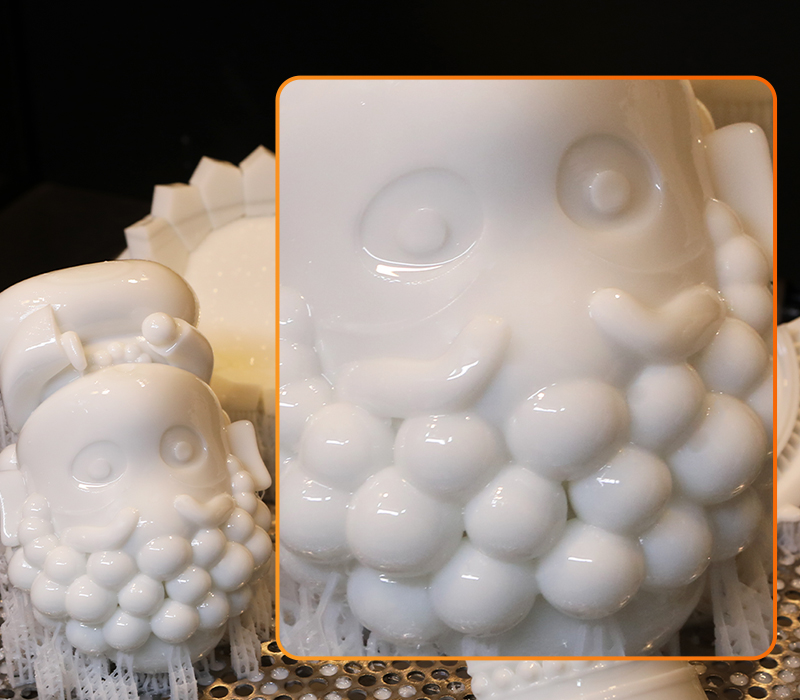SLA (Stereolithography) 3D printers have shown many advantages in industrial production, which make SLA 3D printing technology occupy an important position in modern manufacturing. The following are the main advantages of SLA 3D printers in industrial production:

1. High precision and high quality
High precision: SLA 3D printers can achieve very high printing accuracy, usually up to 0.05mm or even higher, which ensures that the printed parts have extremely high dimensional accuracy and shape accuracy.
High quality surface: The surface of the parts printed by SLA technology is smooth, and no subsequent treatment or only a small amount of treatment is required to meet the use requirements, which greatly improves production efficiency and reduces costs.
2. Wide range of material selection
SLA 3D printers support a variety of types of photosensitive resin materials, including rigid, elastic, transparent, heat-resistant and other materials, which makes SLA technology widely used in different industrial fields.
The diversity of material types meets the requirements of different industrial products for material properties, such as wear resistance of automotive parts and biocompatibility of medical devices.
3. Rapid prototyping and verification
SLA 3D printing technology can quickly produce prototypes directly from CAD digital models, without the need for mold making and cutting in traditional manufacturing, greatly shortening the product development cycle.
The fast prototyping speed helps the product development team quickly verify the feasibility and performance of the design plan, find problems in time and make adjustments.
4. Complex structure manufacturing capabilities
SLA 3D printing technology can manufacture parts with complex geometric shapes, which is difficult to achieve with traditional manufacturing processes.
For parts with complex internal structures or external shapes, SLA 3D printing technology can print and form them in one go, without multiple processes and assembly processes, reducing production costs and improving production efficiency.
5. Customized production
SLA 3D printing technology has a high degree of customization capabilities and can quickly manufacture personalized products according to customer needs.
In industrial production, customized production has become a trend, and SLA 3D printing technology can meet this demand, bringing more innovation opportunities and market competitiveness to the manufacturing industry.
6. Environmental protection and energy saving
Compared with traditional manufacturing processes, SLA 3D printing technology uses photocurable resin materials, which does not require a lot of energy and consumables, reducing resource waste.
The SLA 3D printing process generates less waste and is easy to recycle and dispose of, which is in line with the concept of environmental protection and sustainable development.
7. Wide range of applications
SLA 3D printers are widely used in industrial production, including but not limited to the automotive industry, aerospace industry, medical equipment, industrial manufacturing, architecture and architectural design, and art and design.
In these fields, SLA 3D printing technology can play its unique advantages and bring more innovation and development opportunities to the manufacturing industry.
In summary, SLA 3D printers have the advantages of high precision and high quality, a wide range of material selection, rapid prototyping and verification, complex structure manufacturing capabilities, customized production, environmental protection and energy saving, and a wide range of applications in industrial production. These advantages make SLA 3D printing technology play an increasingly important role in modern manufacturing.




